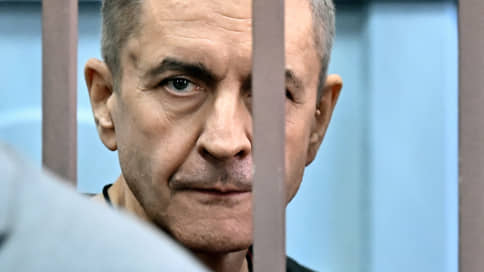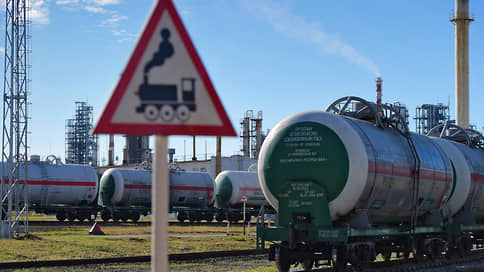US duties and OPEC+ plans provoked a drop in oil quotes

The new US trade duties and OPEC+ plans to increase oil production provoked the strongest cronavirus pandemic of oil quotes from the beginning of the pandemic. In two days, North Sea oil Brent lost 12%in price, rolling up to $ 64 per barrel. At the same time, the Russian currency demonstrated enviable stability against the background of limited demand from importers. However, low oil prices and a strong ruble create the risks of filling the budget of the Russian Federation.
Oil prices have completed a restless week near perennial minimums. According to Investing.com, on April 4, Brent oil quotes in a spot market dropped to $ 64.04 per barrel, the minimum value from mid-April 2021. Even taking into account the correction in the afternoon and the return of the price above the level of $ 65 per barrel, in two days the decline was almost 12%.
According to market participants, about 10% of the cost lost Russian oil Urals, reaching $ 55–58 per barrel (depending on the terms of the transaction).
The prices of European oil varieties fell stronger in the third decade of April 2020 (in two days – by 20%) amid the rapid spread of the coronavirus epidemic. However, five years ago, the pressure on oil quotes had a drop in real demand due to the introduction of large-scale quarantine measures around the world.
Now exchange “bears” recoup on April 2, the US President, raising import duties from 185 countries and the decision of OPEC+ increase oil production quotas (see. « Kommersant » from April 3). Despite the fact that these events were expected, Donald Trump repeatedly announced the introduction of new duties in early April, and OPEC+ began to restore prey in April, few have expected such a scale of decisions. “The market had more certainty regarding the scenarios of the OPEC+action, and in relation to the effect of trade duties – there are much more options for the development of events. In particular, it is not clear whether the United States can cancel duties in the near future or other economies of the world will enter the trade wars with the United States, ”said Kirill Bakhtin, senior analyst at the BCS World Investment BCS.
At the same time, on April 4, the Chinese authorities announced return measures. In particular, from April 10, additional duties of 34% for all products imported from the United States are introduced. As the portfolio manager of Astero Falcon Alena Nikolaeva notes, in such conditions, interruptions in supplies through Juva have already begun, and this is not only in direct trade, but also on Supply Chains (supply chains). “When the largest economies in the world, such as the United States and China, begins the escalation, not only market sentiment falls, but also real expectations for the demand for raw materials,” she notes.
Enhanced movement and technical reasons. The situation is very similar to what is happening in the spring of 2020, when on some days prices fell by tens of percent.
Market participants note that as soon as the headlines on the actions of OPEC+appeared, investors began to avoid an avalanche to close long positions on oil.
As Mrs. Nikolaeva notes, « investors and brokers began to urgently or forcibly close their positions, added oil robots to fire, which intensified the sale. »
In such conditions, experts do not exclude the reduction of quotes below the level of $ 60 per barrel, although it will be difficult to keep them here for a long time. According to Kirill Bakhtin, there is only a small chance of price consolidation below $ 65 per barrel, but since the United States is the largest oil producer, they will turn brown activity and reduce oil production due to a fairly high breakdown point. In addition to this, OPEC+ may refuse to increase production volumes.
“As 2020 showed, OPEC+ can intervene and limit the offer, but to such a step an alliance, which decided to restore the market share, will rather pass at the price of oil below $ 60 per barrel,” says Mr. Bakhtin.
At the same time, the collapse of oil prices had a limited effect on the Russian currency market. During Friday trading, the Office of the dollar rose by only 1.64 rubles, to 85.5 rubles./$.
This is only 50 kopecks. above the closure values of the previous week. Yuan rose to 11.78 rubles./Birge, returning to the values of week ago. “So far, the Russian currency market remains balanced due to the still growing restrictive influence on the import of the hard-credit policy of the Central Bank, as well as against the background of improving the situation with the return of foreign exchange earnings,” said Denis Popov, managing expert of the Center for Analytics and PSB Expertise.
However, the stability of the ruble in combination with the fall in oil prices bears noticeable risks to replenish the budget, which is based on the average price of Urals oil at $ 69.7 per barrel and the middle exchange rate of the dollar 96.5 rubles/$.
This corresponds to the average ruble oil value of 6.7 thousand rubles. For the barrel, which, according to the head of the analytical service of the Zenit bank, Vladimir Evstfeyev, is 30% higher than the current price of Russian oil. At the same time, in the first quarter, the average Urals price was already 5% lower than the budget. “In the formation of oil prices, according to the results of the year, a 30% lower than the planned budget may shorten the income by almost 3 trillion rubles, if 20% lower – 1.6–1.9 trillion rubles,” says Mr. Evstifeev. Mikhail Vasiliev, chief analyst of the Socialist Republic of Council of People’s Commissars, believes that the budget will not receive about 700 billion rubles. Oil and gas revenues, if oil and dollar quotes remain at the current levels until the end of the year.
The Ministry of Finance can close these drop -down income, including due to the additional placement of public debt. However, this may not be required if the situation changes, what analysts await. “This year we expect the average Brent at the level of $ 71 per barrel. The dollar on average will be 96 rubles. (due to growth by the end of the year), ”notes Mr. Vasiliev. That is, the situation with oil and gas revenues may improve “as the demand for currency and smooth weakening of the ruble is restored,” he said. Denis Popov does not exclude the return of the dollar by the end of the year to the range of 95–100 rubles./$.








